What Animal Has The Most Amount Of Chromosomes
The list of organisms past chromosome count describes ploidy or numbers of chromosomes in the cells of various plants, animals, protists, and other living organisms. This number, along with the visual appearance of the chromosome, is known as the karyotype,[2] [3] [4] and can exist found past looking at the chromosomes through a microscope. Attention is paid to their length, the position of the centromeres, banding blueprint, whatsoever differences between the sex chromosomes, and any other concrete characteristics.[v] The preparation and study of karyotypes is part of cytogenetics.
(Scientific name)
(Myrmecia pilosula)

(Tetranychidae)


(Aedes aegypti)


(Muntiacus muntjak)



(Drosophila melanogaster)





(Arabidopsis thaliana)
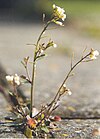

(Wallabia bicolor)


(Brachyscome dichromosomatica)

(Caenorhabditis elegans)

(Spinacia oleracea)


(Vicia faba)


(Scathophaga stercoraria)

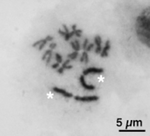
(Dictyostelium discoideum)

(Cucumis sativus)

(Sarcophilus harrisii)


(Secale cereale)

(Pisum sativum)


(Hordeum vulgare)


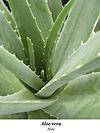

(Phascolarctos cinereus)





(Allium fistulosum)


(Allium sativum)


(Sarcoptes scabiei)


(Raphanus sativus)

(Daucus carota)


(Brassica oleracea)


(Citrus)

(Passiflora edulis)
(Setaria viridis)

(Zea mays)

(Cannabis sativa)

(Xenopus tropicalis)


(Cephalotus follicularis)
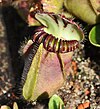
(Theobroma cacao)


(Eucalyptus)

(Didelphis virginiana)

(Phaseolus sp.)

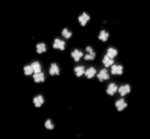

(Cucumis melo)


(Oryza sativa)


(Solanum elaeagnifolium)

(Castanea sativa)


(Solanum lycopersicum)


(Fagus sylvatica)


(Solanum dulcamara)

(Quercus suber)

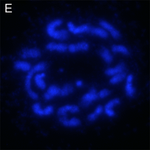
(Pelophylax kl. esculentus)


(Ambystoma mexicanum)


(Cimex lectularius)

(Arthrosphaera magna attems)

(Giraffa camelopardalis)


(Neogale vison)

(Pistacia vera)
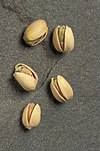


(Saccharomyces cerevisiae)

(Apis mellifera)
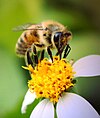

(Taxidea taxus)

(Medicago sativa)
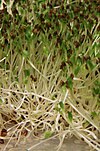

(Vulpes vulpes)

(Helianthus annuus)

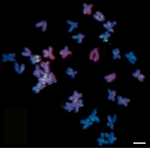
(Erethizon dorsatum)
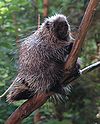
(Cynara cardunculus var. scolymus)


(Cynictis penicillata)

(Vulpes ferrilata)
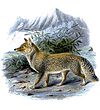
(Asteroidea)

(Ailurus fulgens)

(Suricata suricatta)

(Manihot esculenta)

(Crossarchus obscurus)

(Lumbricus terrestris)

(Xenopus laevis)


(Aldrovanda vesiculosa)

(Panthera tigris)

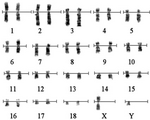
(Enhydra lutris)

(Martes zibellina)
(Procyon lotor)

(Martes martes)

(Sus)


(Aonyx cinerea)

(King of beasts)

(Pekania pennanti)

(Mustela lutreola)


(Felis catus)


(Martes foina)

(Bogertophis rosaliae)

(Martes americana)

(Bogertophis subocularis)

(Mus musculus)

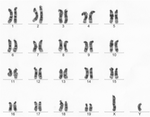
(Mangifera indica)

(Hyaenidae)

(Mustela furo)

(Mustela putorius)

(Castor canadensis)

(Arachis hypogaea)


(Gulo gulo)

(Triticum aestivum)


(Macaca mulatta)


(Rattus norvegicus)


(Avena sativa)
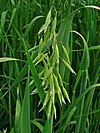

(Ailuropoda melanoleuca)

(Cryptoprocta ferox)

(Oryctolagus cuniculus)


(Meles meles)

(Aurelia aurita)

(Delphinidae)

(Coffea arabica)


(Muntiacus reevesi)

(Homo sapiens)


(Boselaphus tragocamelus)



(Bubalus bubalis)
(Nicotiana tabacum)
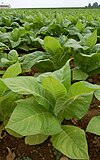
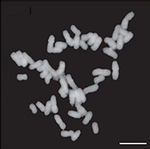
(Solanum tuberosum)


(Pongo)
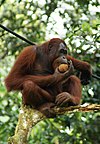
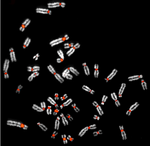
(Lepus)

(Gorilla)

(Peromyscus maniculatus)

(Pan troglodytes)

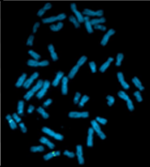
(Castor fiber)

(Danio rerio)

Erinaceus

Atelerix

(Bubalus bubalis)


(Mephitis mephitis)

(Ananas comosus)

(Vulpes macrotis)

(Tremarctos ornatus)

(Ornithorhynchus anatinus)


(Gossypium hirsutum)


(Ovis aries)


(Hyracoidea)
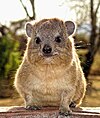

(Nyctereutes procyonoides procyonoides)


(Cebinae)

(Bombyx mori)


(Fragaria × ananassa)


(Bos gaurus)

(Elephantidae)
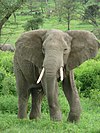
(Mammuthus primigenius)

(Bos grunniens)

(Capra hircus)


(Bos taurus)


(Bison bison)

(Hippotragus niger)

(Vulpes bengalensis)

(Lymantria dispar dispar)

(Equus asinus)

(Ara macao)



(Cavia porcellus)

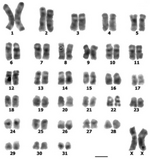
(Spilogale x)

(Horse)


(Vulpes zerda)

(Tachyglossidae)

(Chinchilla lanigera)

(Dasypus novemcinctus)


(Urocyon cinereoargenteus)

(Cervus elaphus)

(Cervus canadensis)

(Rupornis magnirostris)

(Odocoileus virginianus)

(Solanum nigrum)

(Otocyon megalotis)

(Helarctos malayanus)

(Melursus ursinus)

(Ursus maritimus)

(Ursus arctos)

(Ursus thibetanus)

(Ursus americanus)

(Speothos venaticus)

(Chrysocyon brachyurus)
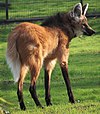
(Canis lupus)

(Canis aureus)

(Columbidae)

(Domestic dog)


(Canis familiaris)

(Cuon alpinus)

(Canis latrans)

(Gallus gallus domesticus)
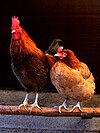
(Lycaon pictus)

(Nepenthes rafflesiana)

(Meleagris)

(Saccharum officinarum)


(Columbidae)

(Cyanopica cyanus)

(Carcharodon carcharias)

(Geranium sanguineum)
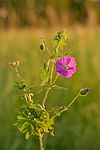
(Botrychium)
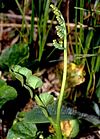
(Sceptridium)

(Ichthyomys pittieri)
(Penaeus semisulcatus)

(Anotomys leander)
(Helminthostachys zeylanica)

(Carassius carassius)


(Tympanoctomys barrerae)


(Clarias batrachus)


(Polyodon spathula)

(Gymnocarpium robertianum)

(Adansonia digitata)

(Petromyzontidae)

(Botrypus virginianus)

(Paralithodes camtschaticus)

(Equisetum arvense)

(Agrodiaetus shahrami)
(Morus nigra)

(Polyommatus atlantica)


(Ophioglossum)

(Tetrahymena thermophila)

10,000x = 10,000 (macronuclear minichromosomes)[134]
(Oxytricha trifallax)

Source: https://en.wikipedia.org/wiki/List_of_organisms_by_chromosome_count
Posted by: kinderfron1970.blogspot.com

0 Response to "What Animal Has The Most Amount Of Chromosomes"
Post a Comment